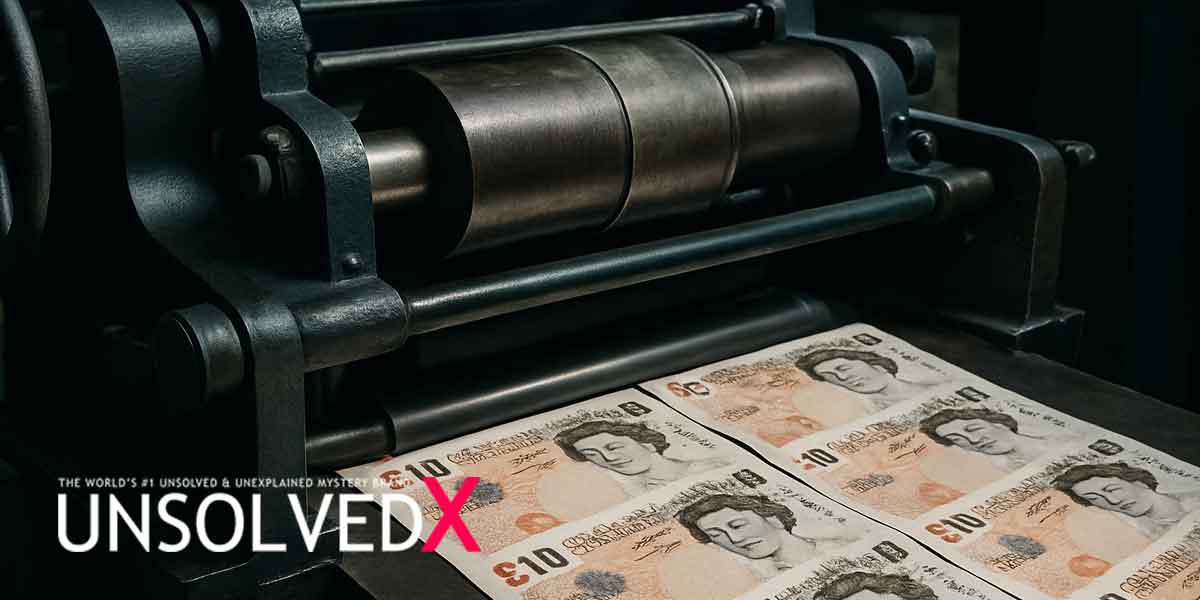The Criminal Genius Who Outwitted Detection
Stephen Jory, born in 1949 in Hackney, London, was no ordinary crook. His ability to evade law enforcement for decades while flooding Britain with counterfeit goods and currency cemented his reputation as a criminal mastermind. Jory’s early ventures into counterfeiting designer perfumes in the 1970s showcased his knack for deception. By bribing a perfumer to obtain formulas for high-end fragrances like Chanel No. 5, he set up secret factories across London and even Acapulco, Mexico, producing millions of fake bottles. His business-like approach—meticulous planning, discreet distribution, and a network of trusted associates—kept him off police radar for years. When he transitioned to forging banknotes in the 1990s, Jory’s methods grew even more sophisticated. He avoided flashy spending that might draw attention, instead living modestly in East London and using intermediaries to distribute his counterfeit £20 and £50 notes. His gang, dubbed the "Lavender Hill Mob," operated with such precision that their fake notes accounted for two-thirds of Britain’s circulating counterfeit currency between 1994 and 1998. Jory’s ability to stay one step ahead lay in his paranoia and discipline—he never carried large sums of fake cash himself and used coded communications to coordinate with his team.
Jory’s downfall came in 1998 through Operation Mermaid, a Scotland Yard sting that unraveled his operation after an associate, Bernard Farrier, was caught with a bag of counterfeit notes. A scrap of paper linking to a printing company run by Jory’s accomplice, Kenneth Mainstone, led police to their Essex hideout. Even then, Jory nearly slipped away, apprehended only after a tense exchange in a TGI Friday’s car park in Enfield. His pager number, found at Farrier’s home, was the final thread that tied him to the crime. Jory’s book, Funny Money, published in 2002 and later as Loadsamoney in 2005, offers a firsthand account of these cat-and-mouse games, revealing a man who thrived on outsmarting authorities. His narrative paints a vivid picture of a calculated risk-taker who saw crime as a craft. Despite his eventual capture, Jory’s ability to evade detection for so long speaks to his cunning and resourcefulness, traits that even Scotland Yard detectives grudgingly admired.
Crafting Forgeries That Fooled a Nation
Jory’s counterfeiting wasn’t just prolific—it was revolutionary. His fake £20 and £50 notes were so convincing that they bypassed UV detectors and were redistributed through Britain’s banking system, forcing the Bank of England to redesign its currency. Partnering with Kenneth Mainstone, a skilled printer, Jory’s operation used a state-of-the-art Heidelberg four-color printing press to replicate the intricate designs of British banknotes. Mainstone’s technique involved separating the £20 note’s design into 17 distinct colors using a video disc image, ensuring near-perfect replication. The notes featured a faint litho-printed "watermark" and a printed metal strip coated with white opaque ink to mimic the real thing, fooling even trained cashiers. Jory’s attention to detail extended to sourcing high-quality paper, the name of which UnsolvedX can't disclose, a critical element often overlooked by lesser counterfeiters. His team also produced fake postage stamps, tax stamps, and even considered forging £1 coins, showcasing their ambition. Inspector Clive Merret of Scotland Yard called these notes “the most convincing forgery I have ever seen,” a testament to their quality.
The scale of Jory’s operation was staggering—estimates suggest £50 million in fake notes, though the true figure may be higher, with some still in circulation today. His distribution network was equally ingenious, selling notes at 5% of face value to underworld contacts who passed them in small transactions to avoid suspicion. Jory’s earlier perfume counterfeiting honed his ability to mimic premium products, and he applied the same precision to currency. His factories, hidden in unassuming locations like a garage in Essex, were designed for secrecy, with equipment dismantled or concealed between runs. Funny Money details these methods, offering readers a glimpse into the technical wizardry behind his forgeries. The book, praised for its gripping narrative by reviewers on Goodreads, underscores Jory’s pride in his work without glamorizing crime. His methods weren’t just about printing money—they were about creating trust in a lie, a skill that made him a legend in the underworld and a headache for the Bank of England.
A Legacy of Skill Over Infamy
Jory’s story isn’t one of villainy but of talent misdirected. A self-described “old school” criminal, he chose crime not out of desperation but as a challenge to his intellect. His skills in chemistry, logistics, and engineering could have made him a titan in legitimate business. Instead, he channeled them into creating near-flawless forgeries, earning a fortune and a peculiar kind of respect. Even after his 1985 conviction for a £300 million perfume fraud and his 1998 eight-year sentence for counterfeiting, Jory’s charisma shone through. Journalist Tom Willis, who met him while working on a Channel 4 crime series, described him as a “lovable rogue” who doted on his children and charmed even the police. Jory’s time in prison wasn’t wasted—he wrote Supergrass, a novel, during an earlier stint and later penned Funny Money while on remand at HMP Winchester. These works, published through his own Pirate Publications and later by mainstream presses, reveal a reflective man aware of his mistakes but unapologetic about his craft.
After serving his sentences, Jory faded from the spotlight, passing away in 2006 at age 57. His legacy endures not in infamy but in the ingenuity that forced a national bank to rethink its security. Unlike other mysteries, such as the still-unsolved Tamam Shud case, Jory’s story is fully documented, yet it retains an air of intrigue for its sheer audacity. His books remain a treasure trove for true crime enthusiasts and offer insights into a mind that saw counterfeiting as art. For those intrigued by his methods, visiting the Bank of England Museum in London provides context on how currency security evolved in response to threats like Jory’s. His life reminds us that brilliance, when untethered from ethics, can both dazzle and disrupt, leaving a mark that lingers long after the crime is done.










Comments
Comments section coming soon!